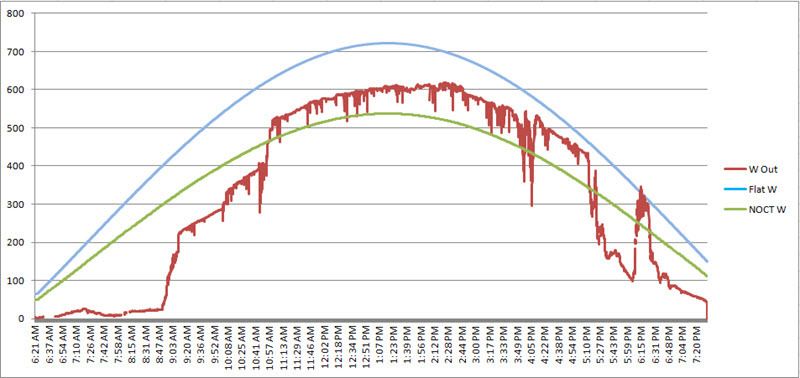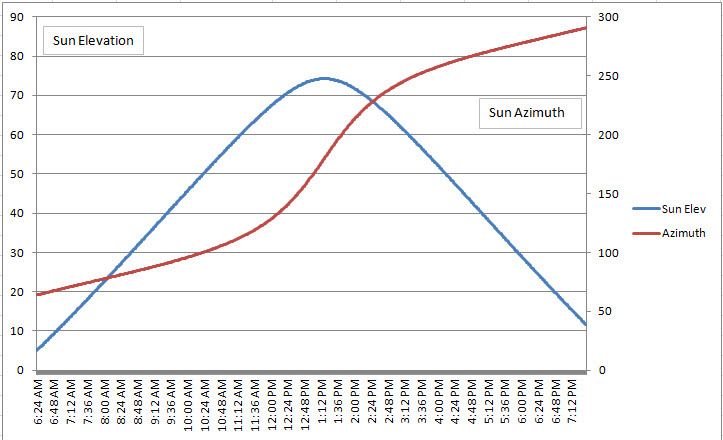CA_Traveler
Dec 26, 2015Explorer III
Solar Panel Performance vs Sun Elevation
There are many factors that affect panel performance but one that is predictable is the angle of the sun striking the panel. The literature suggests that the panel watts * sin(sun angle on the panel) can be used to predict or check the maximum possible panel output.
The red graph shows my 750W flat panel controller output on 6/27/15 in Grand Junction, CO. The morning output dips reflects shade from trees and the afternoon dips are due to passing clouds. Actually the panels are tilted 4 degrees to the SW and that appears to be reflected from noon on.
The blue curve is 750W * sin(sun elevation) while the green curve is 558W (NOCT value) * sin(sun elevation). These graphs do not reflect weather, wiring/controller losses, etc. But they do suggest that the sin (sun angle) is a useful aspect for understanding panel output.

This chart shows the USNO sun elevation data for the sun on the same day. Since the sun azimuth was also available I included it and it spans 227 degrees.

The red graph shows my 750W flat panel controller output on 6/27/15 in Grand Junction, CO. The morning output dips reflects shade from trees and the afternoon dips are due to passing clouds. Actually the panels are tilted 4 degrees to the SW and that appears to be reflected from noon on.
The blue curve is 750W * sin(sun elevation) while the green curve is 558W (NOCT value) * sin(sun elevation). These graphs do not reflect weather, wiring/controller losses, etc. But they do suggest that the sin (sun angle) is a useful aspect for understanding panel output.

This chart shows the USNO sun elevation data for the sun on the same day. Since the sun azimuth was also available I included it and it spans 227 degrees.
